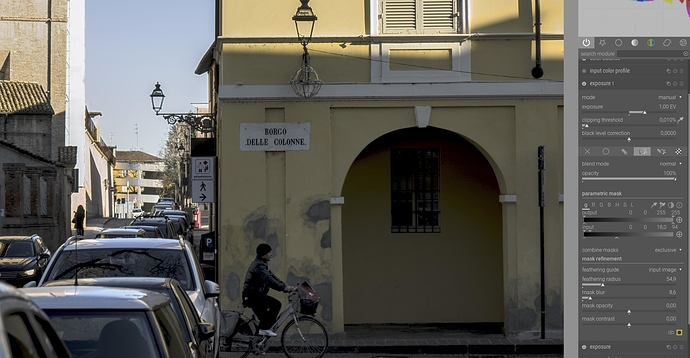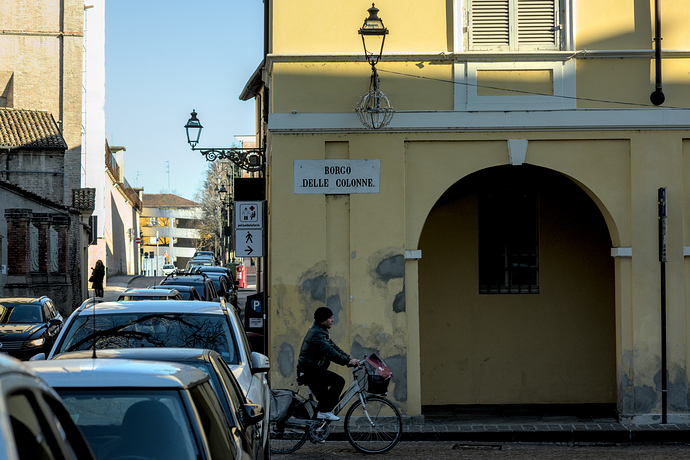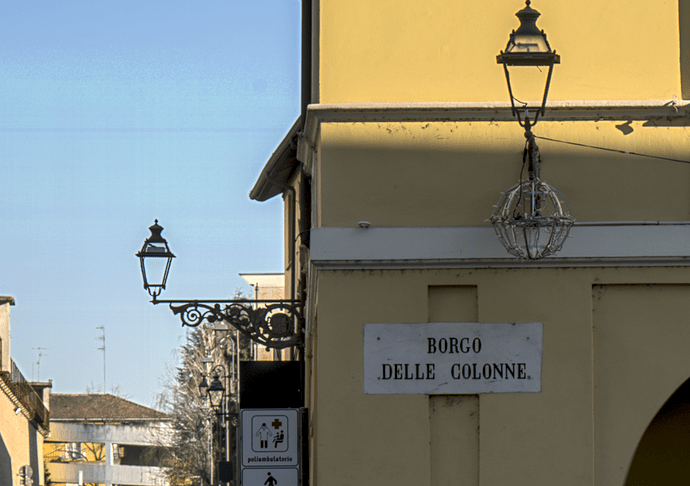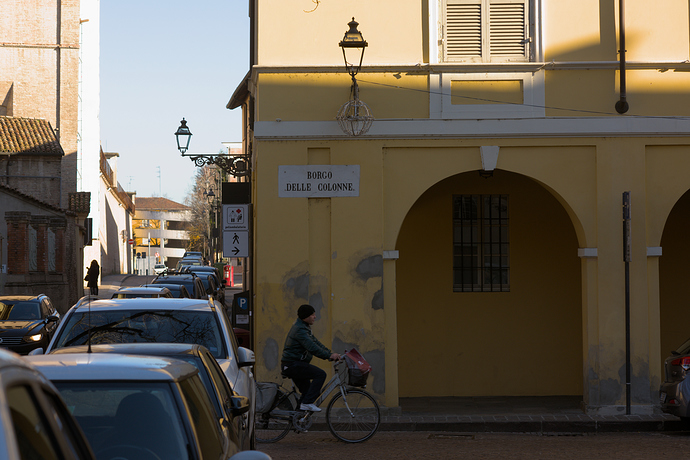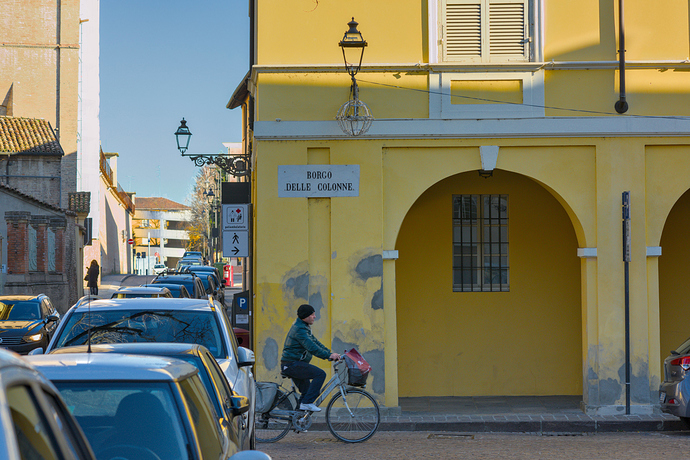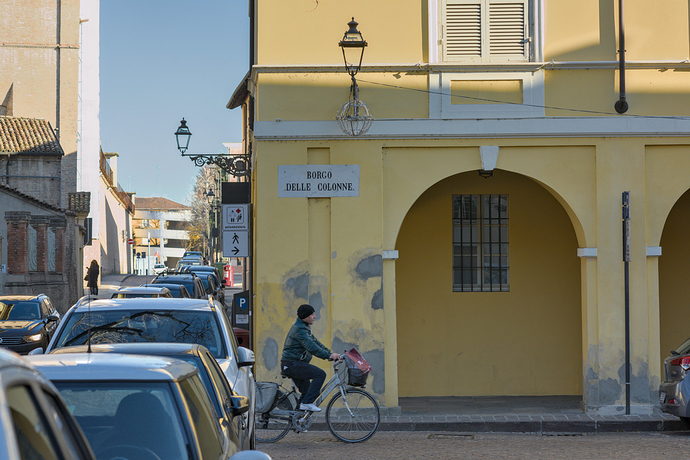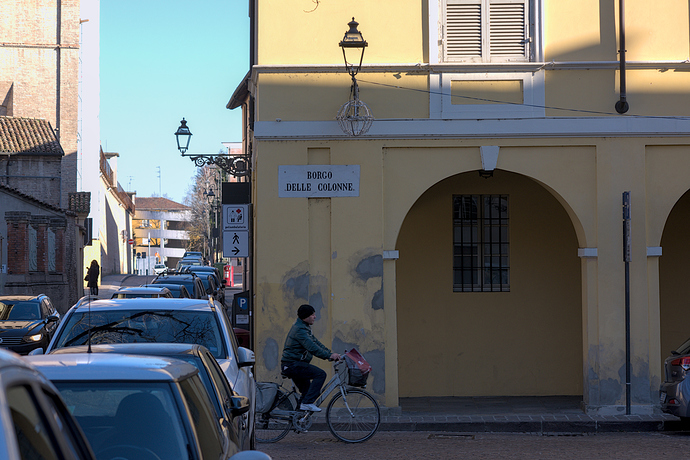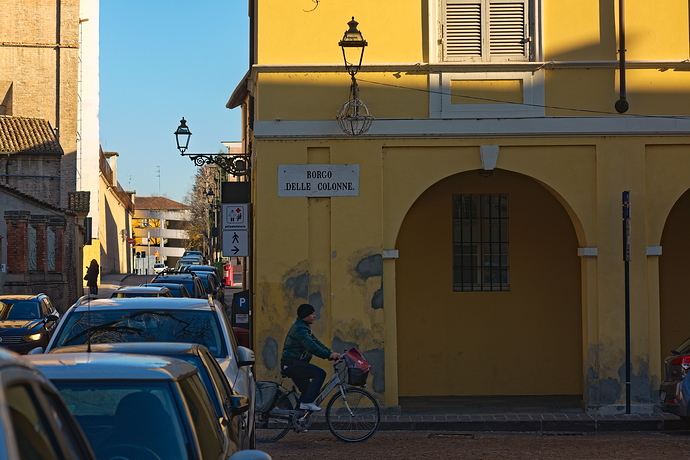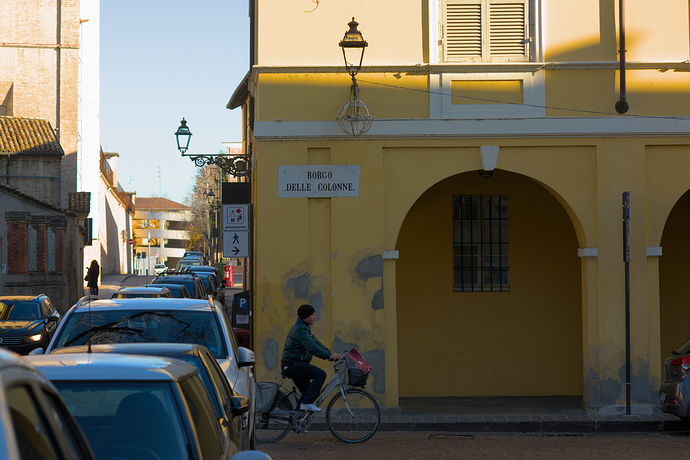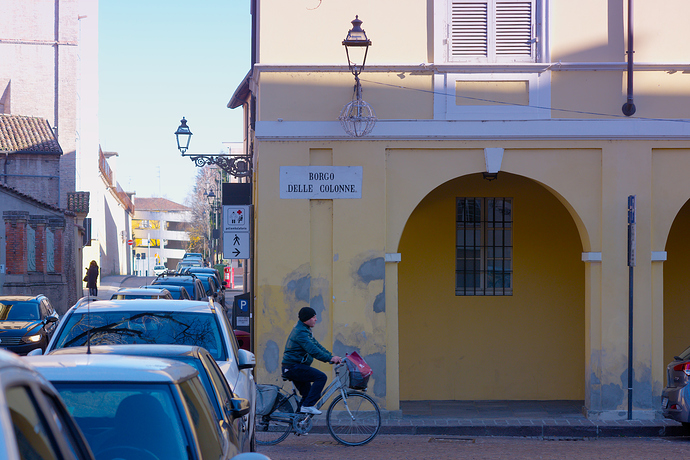After Aurelien’s recommendation to simply use exposure with a mask as a straight replacement for shadow/hilights, I did try the following but I’m unable to make the transition from dark to light smooth and realistic. This screenshot below shows the photo and the parameters for the masked exposure:
Obviously this is a situation where Filmic would be the ideal solution so I did try that and even if I like the output I’m unable to match the colors in the two copies, also I don’t even know anymore what is the most accurate/realistic rendition of the colors in the scene (check the yellow of the building). This type of situation, with high contrasts and strong shadows is something that I like a lot when taking photos so this is why I’m focused on getting this right and understand what’s the best solution.
So, this is a jpeg created by using my usual minimal set of modules (exposure, rgb curve, color balance, local contrast):
While this is using filmic:
Finally, there is also the issue of highlight reconstruction; If there is no overexposure I stick to the default (clip higlights) but in this situation I would normally use use “Reconstruct in LCh” (what I’ve done in these two examples). However, by using “Reconstruct in color” I get back a saturated yellow in the building which is exactly what I remember; however the sky falls apart with artifacts such as these:
(please note that the colors of these screenshot are not accurate and do not reflect what I see; the jpeg exported from DT however they’re truthful).
So in summary I’d like to get your ideas about:
- how to create masked exposure to recover shadows, i.e. the actual parameters to make the mask
- how can I better control (or match) filmic’s color rendition compared to a simple exposure+rgb curve
- recommended parameters for highlight reconstruction
Thanks to everyone in advance!
This is the original raw file plus the two .xmp to recreate the two versions above:
20191226_NIK1830.nef (42.9 MB)
20191226_NIK1830.nef_filmic.xmp (13.8 KB)
20191226_NIK1830.nef.xmp (9.8 KB)
As always, the raw file is provided with a CC license blah blah blah
